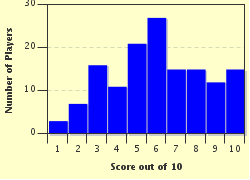Quiz Answer Key and Fun Facts
1. Hello! I am the English language. Although I borrow plenty of words from the Italic languages - otherwise known as the Romance language - I'm not one myself. Which language family do I belong to?
2. Hei! I am the Finnish language. Of the Scandinavian languages, I'm the odd one out. In fact, I'm actually an Uralic language. Hungarian is one of my relatives, but an even closer relative is the official language of a Baltic state. Do you know which one?
3. Molo! I am the Xhosa language, one of the eleven official languages of South Africa. I belong to the largest African language family, and you'll find us all over sub-Saharan Africa. Which language family is it?
4. Assalaamu alaykum! I am the Urdu language. Hindi and I are in the same language family, as we are both written forms of Hindustani, but is it true that we are also related to Pashto and Persian?
5. Bongu! I am the Maltese language. I'm spoken in a country in the south of Europe, so you might think I'm Italic, but you'd be wrong. You'll have to look further east for my origins. What language family do I belong to?
6. Czesc! I am the Polish language. I am a Slavic language, but there are different branches of the Slavic group, divided by geographical location. Which branch of the Slavic group do I belong to?
7. Salam! I am the Turkmen language. My name should give you a clue as to what language family I belong to. Other relatives of mine include Azeri and Crimean Tatar. What language family do I belong to?
8. Namaskaram! I am the Malayalam language, one of the many languages of India. I come from a family of languages spoken across the south of India and other nearby countries, such as Sri Lanka. My relatives include Kannada, Tamil and Telugu. What language family do I belong to?
9. Demat dit! I am the Breton language. I am spoken in France, but I am not a Romance language. In fact, I have more in common with the languages of Britain. What family do I belong to?
10. Kaixo! I am the Basque language. Like the Breton language above, I am spoken in a country whose main language is a Romance language, but I'm not one myself. In fact, I don't belong to any particular language family. What is the term for languages like me?
Source: Author
Kankurette
This quiz was reviewed by FunTrivia editor
stedman before going online.
Any errors found in FunTrivia content are routinely corrected through our feedback system.

